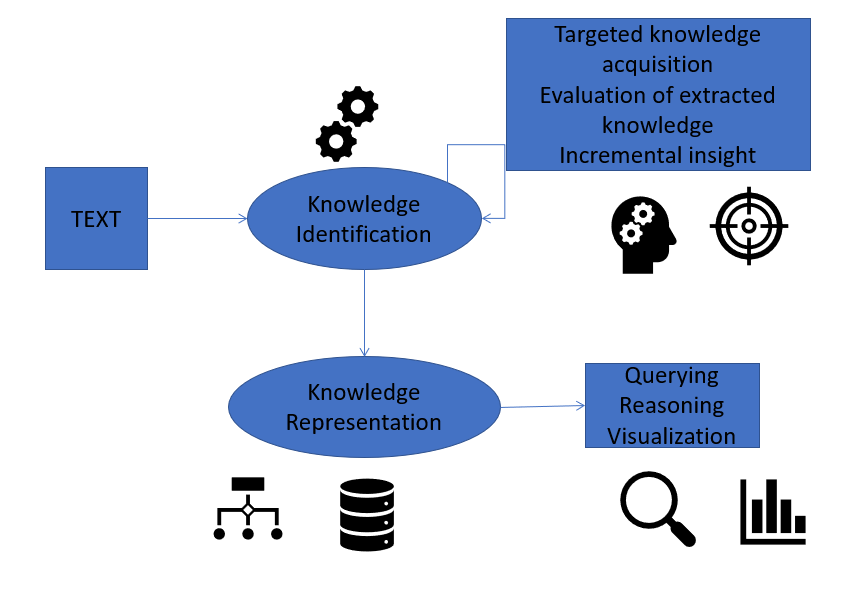Rationale and Methodology
Incorporating automated techniques into humanities and social sciences research is still somehow a contentious issue. If applied without due methodological care, the result of automatic analysis can easily overload and confuse.
A completely automatic analysis does often not conform to scholarly requirements of quality and rigour because the information it provides does not take the complexity of the text or specific research questions into account. Also, the results are unfocused, presupposing that scholars are comfortable with setting wider tolerances for error in order to be able to work with automated analyses.
Across disciplines it is recognized that technical fixes will achieve little unless they are embedded in a broader understanding of the rationale behind the method of scholarly analysis, which needs to engage with automation in line with researchers’ own requirements.
Within Digital Humanities, scholars rightfully object to the idea of automated analysis as a one stop solution that dictates and drives the scholarly research process.

Techniques such as Data Analysis and Language Technology (LT) are no magic bullet.

Nor do they provide a one-step solution for complex information requirements.
Language technology makes use of Natural Language Processing (NLP) techniques, and provides valuable text derived information for a wide variety of analysis activities. NLP methodologies such as linguistic analysis, named entity recognition and term extraction provide useful information for scholarly analysis and interpretation in various stages and aspects of the research workflow. They form a bridge between the linguistic surface structure and the underlying conceptual content of textual resources because they enable the computer-based, automatic acquisition of content. When used in the right way, they are useful tools for conceptual exploration, analysis and knowledge management.
What is the right use of Language Technology?
TextDimensions considers Language Technology an integrated part of the overall process of text analysis (both qualitative and quantitative) within a targeted collaboration with qualitative scholarly analysis and interpretation.
We see an expanded role for multi-faceted research workflows that deeply incorporate automated text analysis. These workflows harness, rather than replicate or come into conflict with, existing research processes.
They seamlessly integrate targeted NLP micro-tasks that provide useful data for further qualitative interpretation by experts.
In our opinion, the scope of LT is to help focus on specific research requirements by incrementally and flexibly providing targeted textually derived information and structured knowledge in service of the scholarly research questions.
TextDimensions provides a methodology that is customized to your needs and enables us to efficiently work together.
